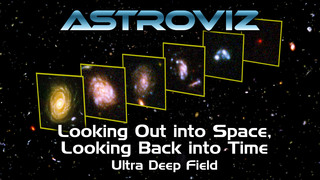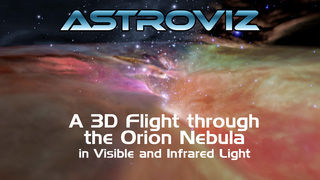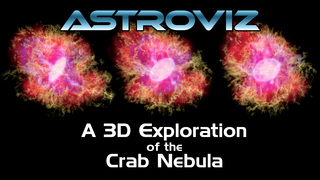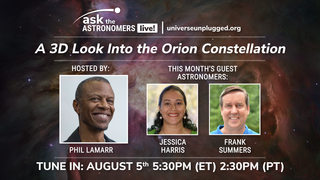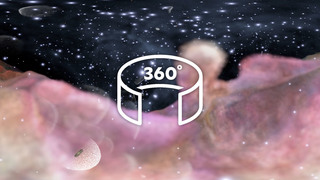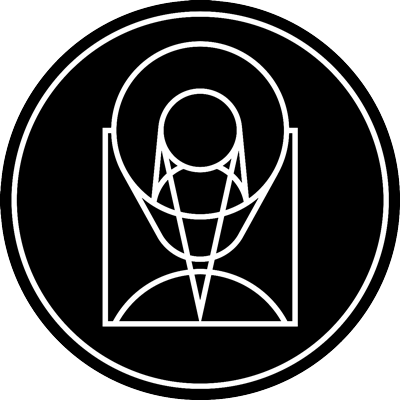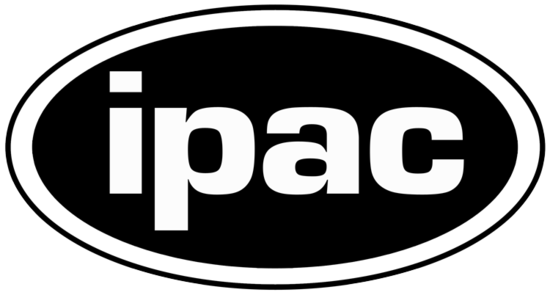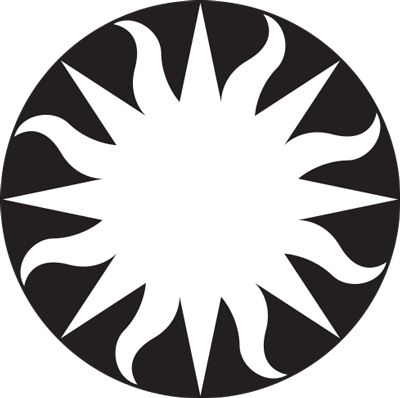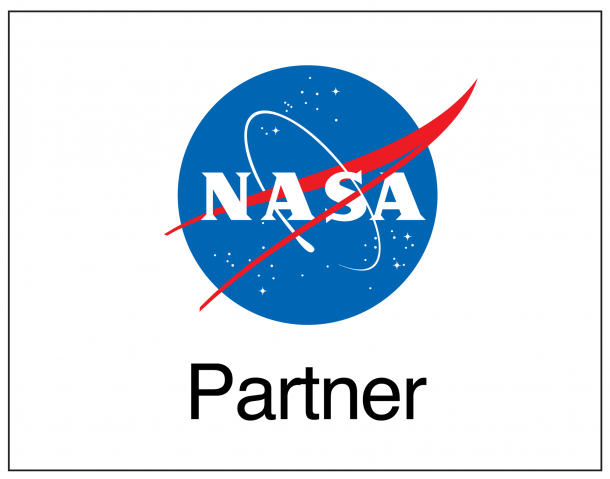Feedback for A 3D Flight through the Orion Nebula - AstroViz
By leaving feedback, you agree to allow NASA's Universe of Learning to publish the content and information you provide in your submission form. We will only use this information to recognize your entry on our series and social media, and we will never publish your email.
A 3D Flight through the Orion Nebula - AstroViz
Primary
•
July 22nd, 2020
This visualization explores the Orion Nebula using both visible and infrared light. The sequence begins with a wide-field view of the sky showing the plane of our Milky Way Galaxy, then zooms down to the scale of the Orion Nebula. The visible light observation (from the Hubble Space Telescope) and the infrared light observation (from the Spitzer Space Telescope) are compared first in two-dimensional images, and then in three-dimensional models.
As the camera flies into the star-forming region, the sequence cross-fades back and forth between the visible and infrared views. The glowing gaseous landscape has been illuminated and carved by the high energy radiation and strong stellar winds from the massive hot stars in the central cluster. The infrared observations generally show cooler temperature dust at a deeper layer of the nebula that extends well beyond the visible image. In addition, the infrared showcases many faint stars that shine primarily at longer wavelengths. The higher resolution visible observations show finer details including the wispy bow shocks and tadpole-shaped proplyds. In this manner, the movie illustrates the contrasting features uncovered by multi-wavelength astronomy.
CREDITS: NASA, ESA, and F. Summers, G. Bacon, Z. Levay, J. DePasquale, L. Hustak, L. Frattare, M. Robberto, M. Gennaro (STScI), R. Hurt (Caltech/IPAC), M. Kornmesser (ESA), A. Fujii; Acknowledgement: R. Gendler; Music: “Dvorak – Serenade for Strings Op22 in E Major larghetto”, performed by The Advent Chamber Orchestra, CC BY-SA

